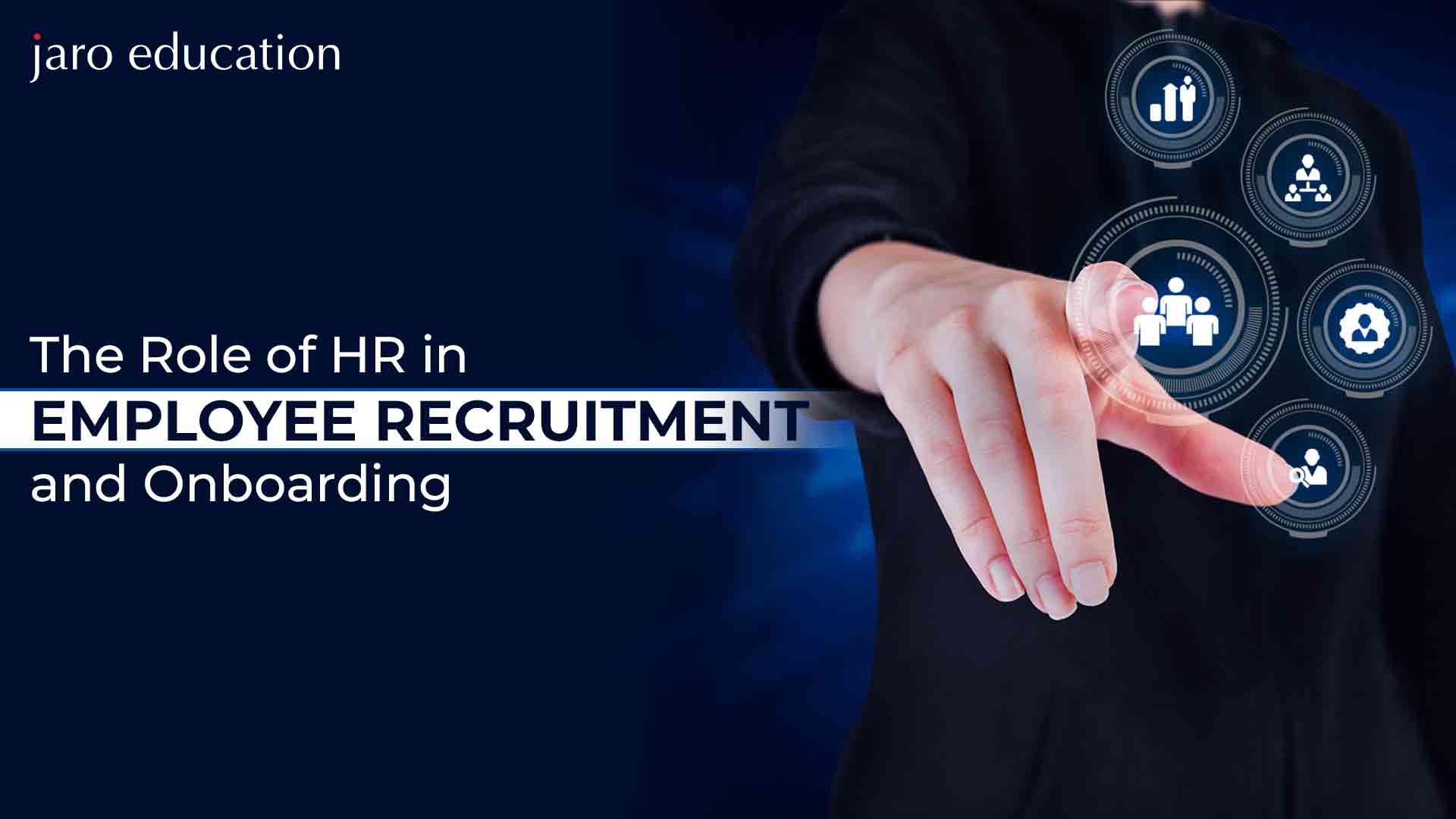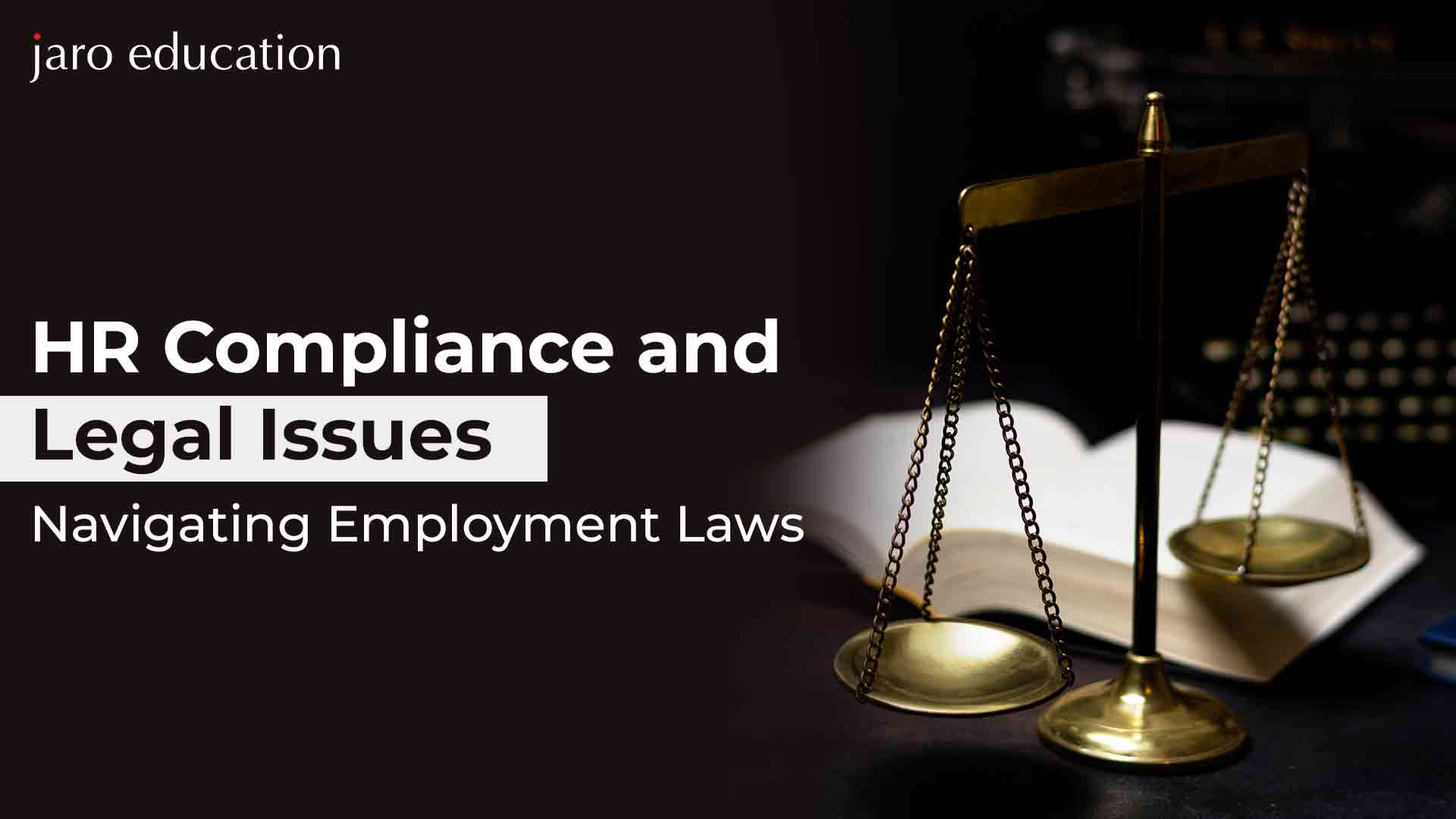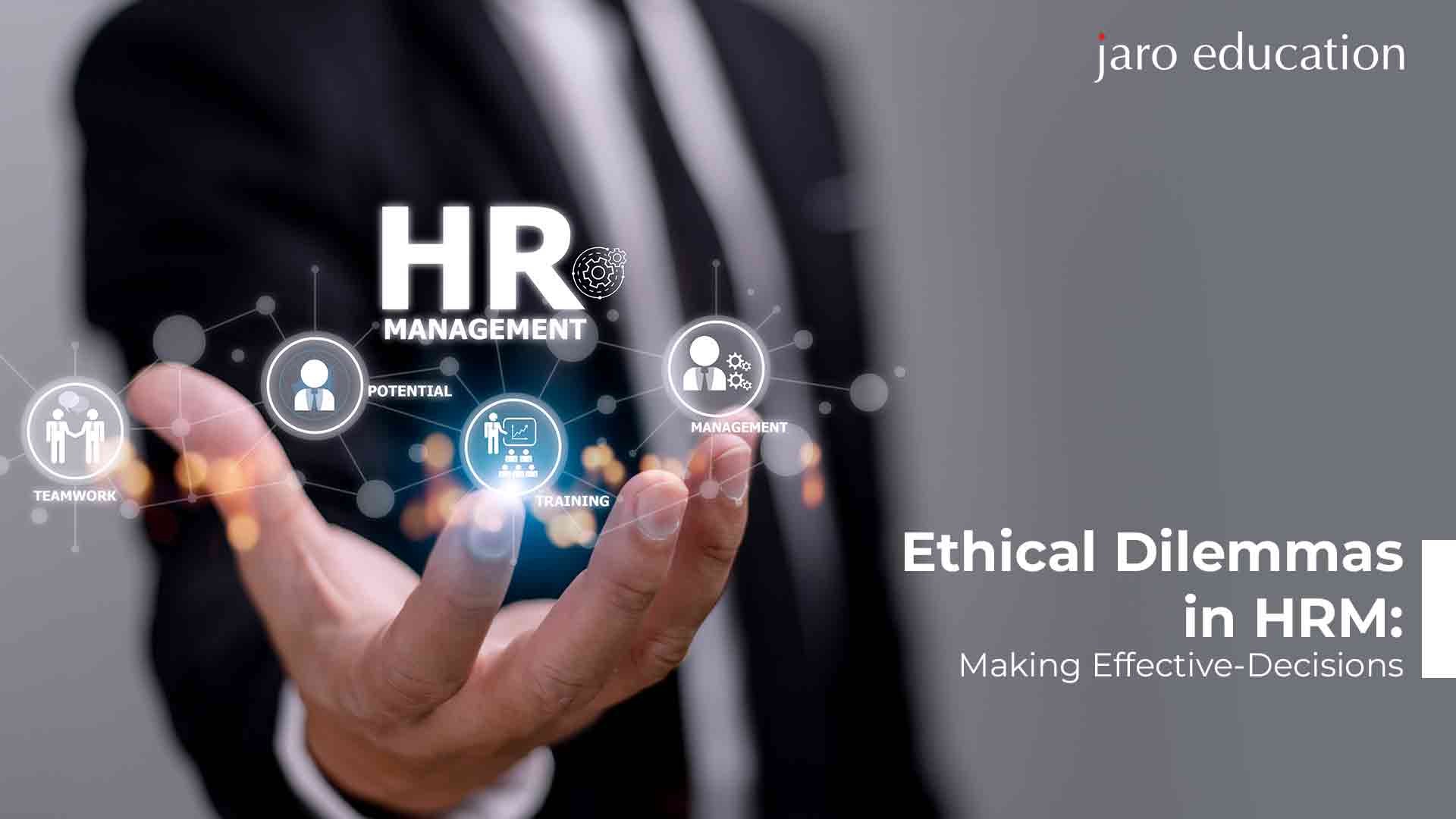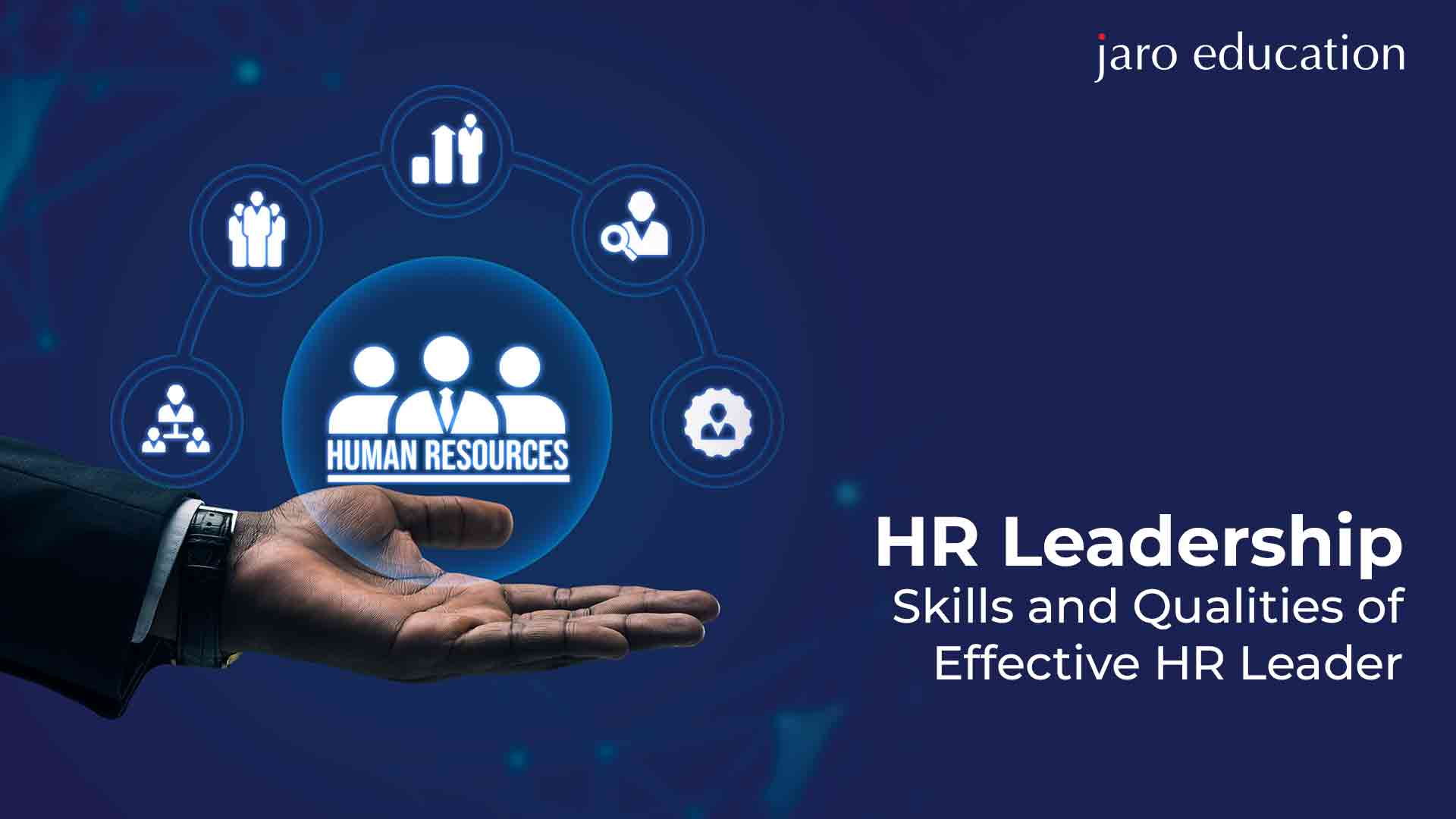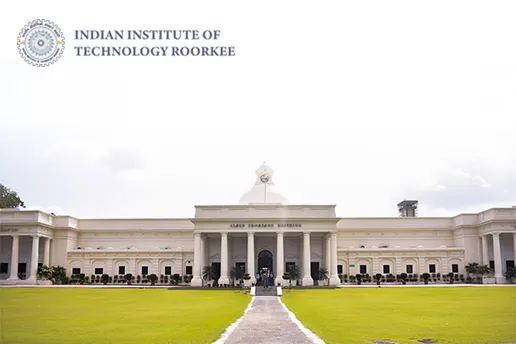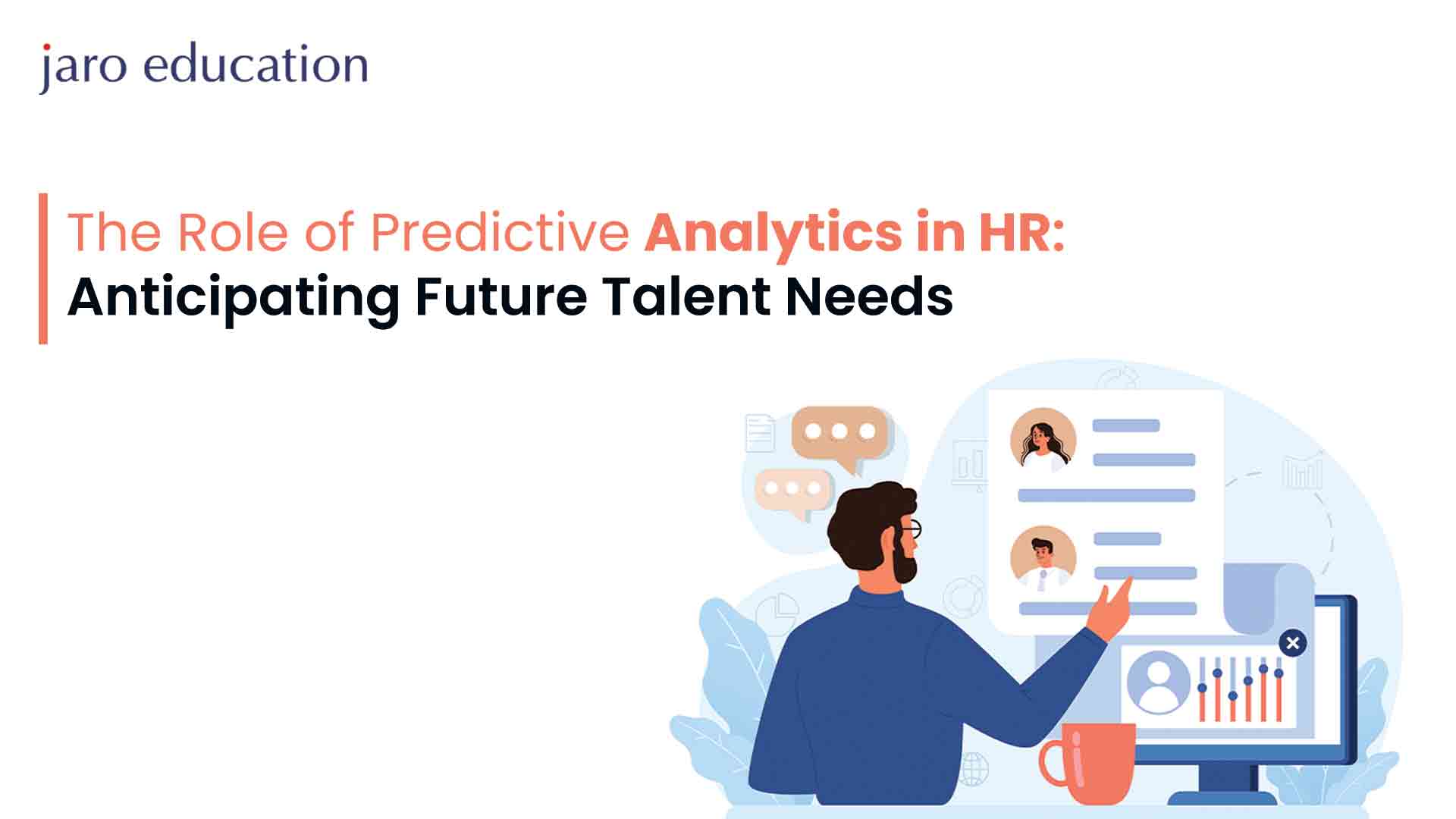
- jaro education
- 29, April 2024
- 10:00 am
Companies are always looking for ways to stay ahead in managing their workforce. While crystal balls are just a myth, predictive analytics offer a real way to foresee business decisions by analyzing past and present data. This helps in hiring, addressing skill gaps, reducing employee turnover, and adapting to upcoming challenges.
A 2022 SkyQuest Technology survey shows a 50% increase in the use of predictive analytics, proving its importance in shaping strategic workforce decisions. Companies that use these analytics report a better understanding of their talent needs and improve HR operations. However, 42% of companies still haven’t adopted predictive analytics, missing out on valuable insights.
CUNA Mutual Group, an insurance company in Madison, Wis., shows the power of predictive analytics. By analyzing diversity metrics, they found that candidates of color tended to apply later in the job posting cycle, highlighting the need for timely adjustments.
This example shows how predictive analytics can uncover hidden patterns and drive meaningful change in organizations. It’s not just an option but a necessary strategy for success in today’s workforce landscape. In this blog, we will explore more on the role of Predictive analytics, and how it works with some case studies.
Table of Contents
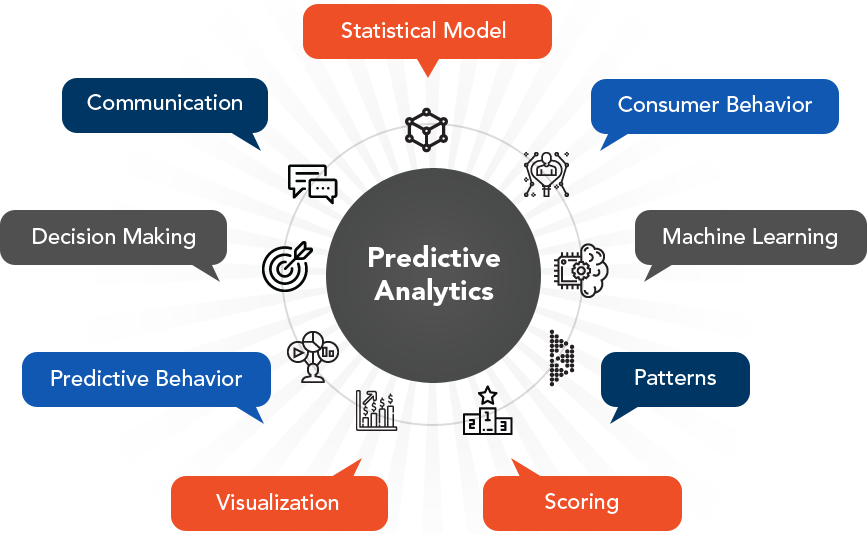
*devteam.space
Understanding Predictive Analytics in HR
Predictive HR analytics, also known as human resources analytics, represents an advanced approach within HR management that harnesses data science, statistical modeling, surveys, and machine learning techniques to analyze employee behavior using both historical and real-time data.
The primary aim of predictive HR analytics is to anticipate future trends, behaviors, and outcomes within an organization’s workforce by processing and examining a diverse array of employee data. Furthermore it also includes, performance metrics, skill assessments, levels of engagement, hiring patterns, and more.
Beyond simply analyzing data, predictive HR analytics yields invaluable insights and statistics essential for guiding human resource professionals in their decision-making processes. These insights can inform recruitment evaluations, aid in the development of tailored training programs, and help align HR strategies with broader business objectives. Ultimately, predictive HR analytics serves as a powerful tool for optimizing workforce management and maximizing organizational effectiveness.
Before moving further, here are some of the key advantages associated with predictive analytics and techniques:
Efficient Candidate Selection:
By analyzing historical hiring data and candidate attributes through analytics, organizations can pinpoint the most suitable candidates for specific roles. This streamlined approach enhances the recruitment process, ensuring a better match between candidates and job requirements.
Anticipating Future Hiring Needs:
Predictive HR analytics enables organizations to forecast future hiring needs accurately. By leveraging insights from data analysis, HR departments can ensure they have the right talent with the necessary skills to fulfill organizational objectives. This proactive approach minimizes recruitment delays and ensures a steady supply of qualified personnel.
Cost Reduction:
Implementing predictive HR analytics can lead to cost savings for businesses. By optimizing hiring and retention strategies based on data-driven insights, organizations can minimize recruitment costs and reduce turnover rates. This results in more efficient resource allocation and improved overall financial performance.
Role of Predictive Analytics to forecast Future Talent trends
Predictive analytics serves as a crucial tool for organizations striving to anticipate talent trends in today’s fiercely competitive environment. By harnessing data pertaining to employee performance, recruitment, turnover, and other pertinent metrics, companies can forecast future workforce trends and take proactive measures to stay ahead. Here’s how predictive analytics plays a pivotal role:
Enhancing Talent Acquisition Channels
Predictive analytics revolutionizes the recruitment process by optimizing talent sourcing. By delving into historical hiring data, HR teams can pinpoint reliable and effective channels for attracting top talent. Moreover, this tool furnishes recruiters with insights into how well-suited candidates are for specific job openings, enabling them to swiftly fill roles with the most suitable talent. Additionally, predictive analytics empowers HR professionals to allocate resources for talent acquisition more efficiently, ultimately streamlining recruitment funnels.
Anticipating Skill Shifts and Workforce Needs
In today’s dynamic business landscape, industries experience constant changes, leading to shifts in required skill sets. Predictive analytics enables HR teams to scrutinize market data and industry trends, gaining valuable insights into emerging skill demands. Armed with this foresight, companies can proactively plan and allocate resources to either upskill the existing workforce or strategically hire to maintain competitiveness. Furthermore, predictive analytics aids HR professionals in identifying future talent needs, thereby facilitating proactive workforce planning. This may entail adjusting recruitment strategies and offering career development opportunities to bridge anticipated skill gaps.
Enhancing Employee Retention
Employee retention has become a paramount concern for organizations in 2024, as studies indicate that over 50% of global companies struggle with retaining their valuable workforce. Predictive analytics emerges as a pivotal tool in pinpointing potential factors contributing to employee turnover through a comprehensive analysis of pertinent data sets, encompassing metrics like employee engagement rates, performance indicators, satisfaction levels, and average employee tenure.
Armed with such insights, HR professionals are empowered to devise and implement effective retention strategies tailored to elevate the retention rates of key personnel. By strategically leveraging predictive analytics, organizations can identify areas for improvement and deploy targeted interventions to foster a more conducive environment for talent retention.
Enhancing Organizational Performance
Predictive analytics serves as a catalyst for driving organizational performance by unveiling the skills, behaviors, and attributes associated with high achievers. HR teams can harness this wealth of data to make data-driven decisions aimed at optimizing and sustaining peak employee performance across the board.
For instance, by dissecting the traits characteristic of top performers, HR professionals can fine-tune their recruitment processes to target candidates with similar attributes, thus raising the overall performance bar within the organization. Moreover, predictive analytics enables the anticipation of future performance trends, enabling proactive measures to support employees at risk of underperformance.
Predicting Employee Turnover
When employees leave unexpectedly, it can mess things up and cost a lot for a company. Using predictive analytics, businesses can figure out when someone might quit before it happens. This helps HR managers find out who might leave soon and why, like if certain departments have more turnover than others.
Improving Hiring with Predictive Data
Hiring can be tough, and making bad choices costs money. Predictive HR analytics can make hiring better by using smart math to guess which candidates will do well in the long run. This helps companies make smarter hiring decisions and avoid wasting time and money on bad hires.
Guessing Revenue with Engagement Info
How happy employees are affects how well a business does. By looking at how engaged employees are, companies can guess how much money they might make in the future. This data also tells them how well the business is doing overall. Whether it’s sales numbers or how much work gets done, predictive analytics helps predict future success.
How Predictive Analytics in HR Works:
Predictive analytics in HR involves using data analysis and modeling techniques to forecast future outcomes based on historical data. By leveraging these insights, HR professionals can make informed decisions across various areas. Here’s how it works:
- Data-Driven Decision Making: HR predictive analytics rely on big data and statistical algorithms. They learn from existing data to predict individual behavior, enabling precise and data-driven decision-making.
- Specific Predictions: Unlike general trends, predictive analytics provide specific predictions. For example, they can help identify high-performing candidates during recruitment or predict which employees are likely to leave the organization.
- Algorithm Creation: These analytics involve various statistical techniques that analyze historical data and outcomes. The goal is to create an algorithm that best mimics these historical patterns. This algorithm then uses current data to predict future outcomes.
For an in-depth exploration of predictive analytics and its workings, consider enrolling in the Executive Development Program in HR Analytics offered by XLRI Jamshedpur. This program is designed to provide HR professionals with a thorough grasp of descriptive, predictive, and prescriptive analytics, even for those without a strong background in mathematics or statistics. The course utilizes SPSS as the primary tool for illustrations, with initial training also conducted through MS Excel. Through this program, participants will learn how to leverage analytics as a tool to enhance their understanding of data and people management, enabling them to devise effective solutions for real-world HR challenges.
Case Study of Predictive Analytics in HR
Anticipating Success in Google’s Hiring Process
In the book “Work Rules!” authored by Laszlo Bock, who serves as the Senior Vice President of People Operations (HRM) at Google, a significant emphasis is placed on the pivotal role of statistics within Google’s People Operations. Bock highlights that Google’s hiring process revolves around fully automated, computer-generated questions, meticulously fine-tuned to identify the most suitable candidates.
Furthermore, Google utilizes HR predictive analysis to estimate the likelihood of employees departing the company. Notably, Google’s analysis reveals that individuals in sales roles who do not receive a promotion within four years exhibit a higher propensity to leave the company.
Beyond these insights, there are numerous other pertinent metrics integral to effective recruiting practices. These metrics encompass advanced indicators such as time to productivity and the cost associated with achieving optimal productivity levels. Tracking these metrics enables organizations to assess whether they are effectively selecting and onboarding the right individuals for their teams.
Forecasting Revenue Using Engagement Metrics
Employee engagement holds a pivotal position within the domain of Human Resources and is often recognized as a catalyst for heightened productivity, enhanced work quality, decreased absenteeism, and diminished turnover rates.
Best Buy, a big electronics store, wanted to know how engaged employees affected sales in their stores. They looked at their data and found something interesting: even a tiny 0.1 per cent increase in engagement meant an extra $100,000 in revenue per store.
With this valuable insight, Best Buy decided to check employee engagement levels several times a year. This helped them understand what makes employees more engaged. With this knowledge, they could make specific changes to improve engagement, which then boosted store revenue.
Breakthrough in Predictive Employee Engagement
One remarkable example of successful employee engagement comes from IBM, where they have achieved a remarkable 95% accuracy rate in predicting employee attrition. IBM achieved this feat by harnessing advanced machine learning algorithms and analyzing various data points, such as employee sentiment, performance metrics, and external factors. Through this predictive model, IBM can effectively identify employees who are at risk of leaving the organization. This foresight empowers HR departments to engage with employees proactively and implement tailored engagement strategies to mitigate turnover and retain valuable talent.
Avoidance of hiring toxic employees
Cornerstone conducted a comprehensive study on the detrimental effects of toxic employees within the workplace environment. Toxic employees are individuals who exhibit behaviors detrimental to organizational harmony, such as engaging in fraud, substance abuse, or harassment.
These toxic individuals not only pose a threat to company integrity but also significantly impact the overall work atmosphere. Previous research has indicated that the presence of just one toxic employee in a team can lead to a notable decrease in productivity, ranging from 30% to 40%, as per LinkedIn. Furthermore, it has been observed that high-performing employees are more inclined to leave their positions when forced to collaborate with toxic colleagues.
For their study, Cornerstone analyzed a dataset encompassing 63,000 employees, focusing on instances of involuntary termination due to workplace misconduct including violence, document falsification, substance abuse, and policy violations. Based on their analysis, approximately 4% of the workforce could be classified as exhibiting toxic behaviors.
Upon scrutinizing the dataset, Cornerstone identified several distinctive traits common among toxic individuals:
- Self-proclaimed adherence to rules.
- Low scores in terms of attendance and reliability.
- Limited emphasis on service orientation.
Interestingly, the study did not find immediate significant declines in productivity as previously reported. However, it did highlight the contagious nature of toxic behavior, with coworkers exposed to toxic colleagues being more likely to resign. Additionally, the study postulated that toxic individuals contribute to long-term stress and burnout among their peers.
Ultimately, Cornerstone’s findings revealed that the average cost incurred by hiring a toxic employee amounted to $12,800, significantly higher than the $4,000 average cost associated with non-toxic hires. This calculation excludes the long-term productivity losses attributed to burnout and other adverse effects. By refining their hiring procedures, companies can mitigate the risk of hiring candidates prone to toxic behavior, thus fostering a healthier and more conducive work environment.
Conclusion
The role of the HR leader is to drive business growth and maintain competitiveness is paramount. Embracing technology and harnessing the power of data are essential components of this responsibility. Predictive analytics in HR stands out as a potent tool that aligns with these objectives.
Through the analysis and forecasting of employee trends and behaviors, predictive analytics equips you with invaluable insights into performance, preferences, and potential. This knowledge empowers you to make proactive decisions that not only enhance individual and team performance but also boost engagement and contribute to overall business growth. Embracing this technology-driven approach is not just a choice; it’s a strategic imperative that can drive significant positive change and propel an organization toward achieving its goals.

